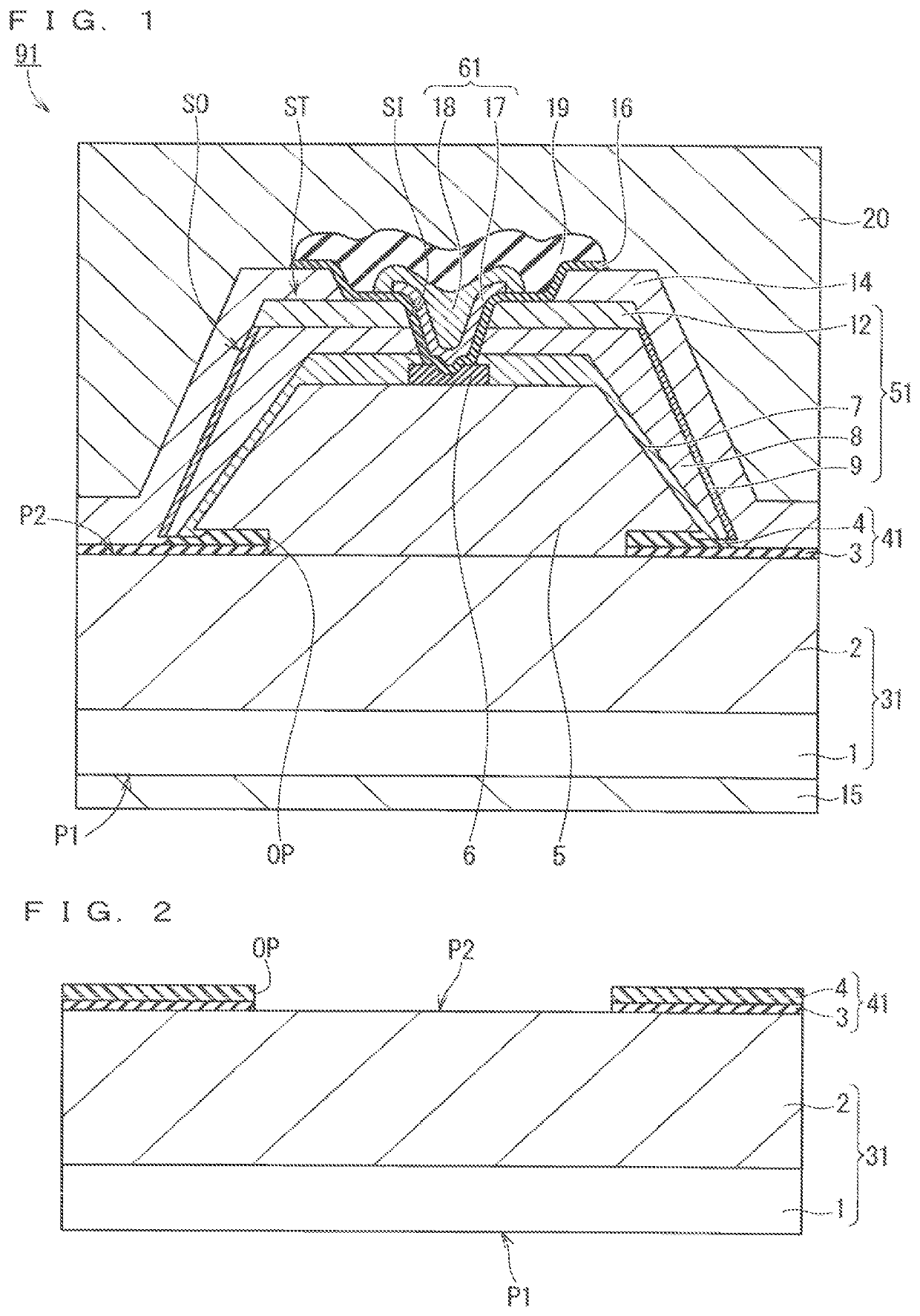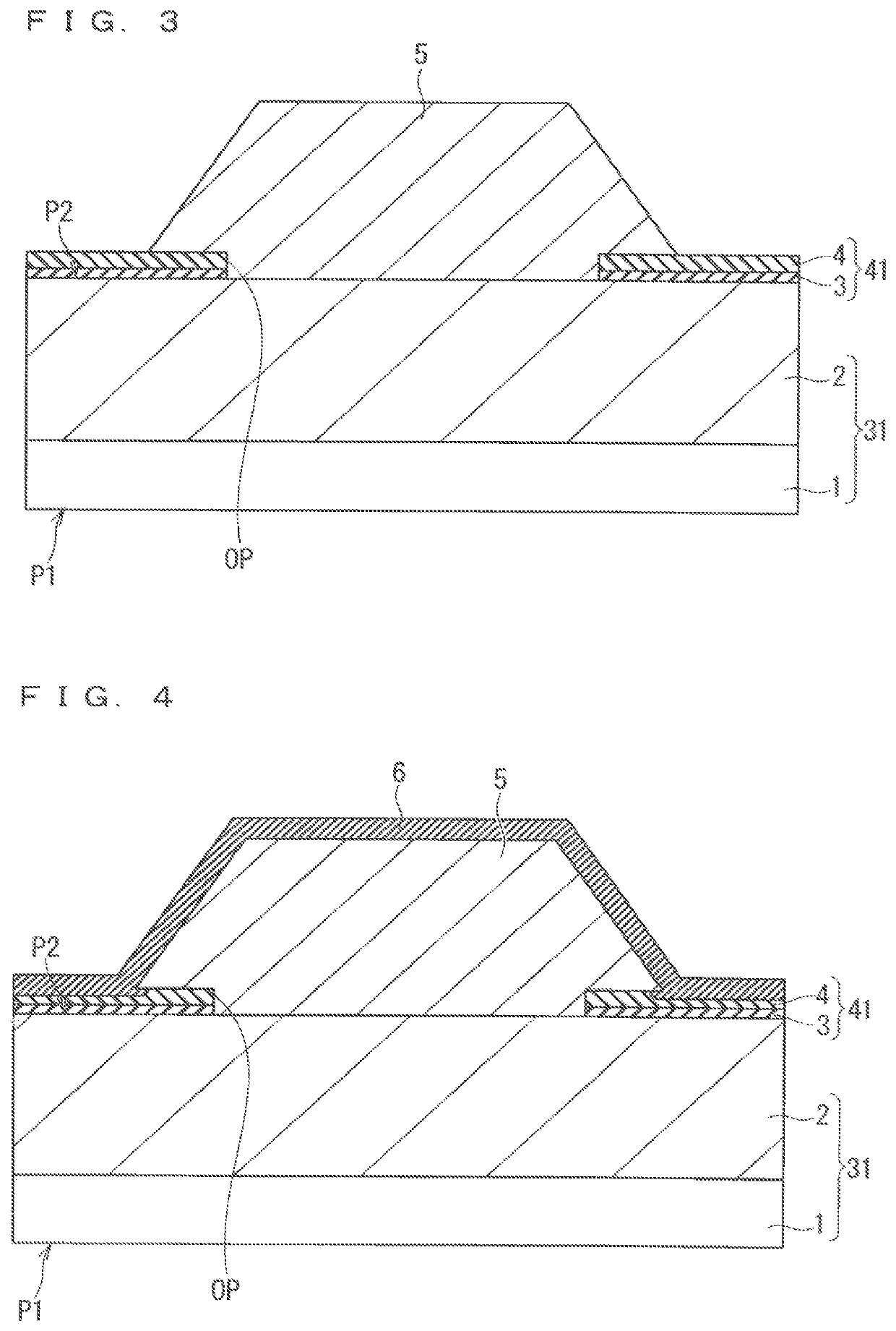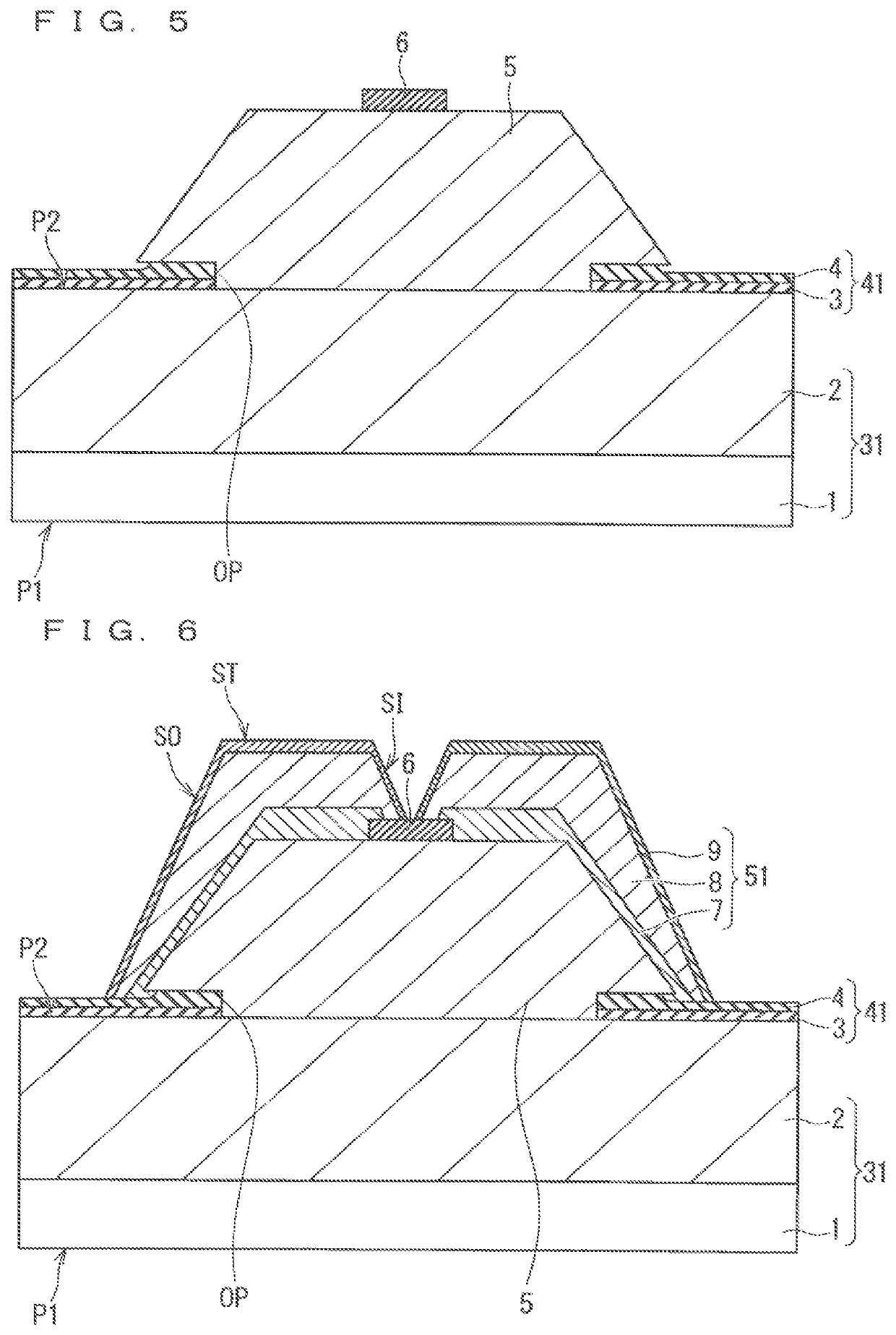Semiconductor device and method for manufacturing semiconductor device
a semiconductor device and semiconductor technology, applied in semiconductor devices, diodes, electrical devices, etc., can solve the problems of reducing the resistance of voltage, further ionizing collision, and destroying the semiconductor device, so as to prevent excessive erosion, high activity, and high activity loss
- Summary
- Abstract
- Description
- Claims
- Application Information
AI Technical Summary
Benefits of technology
Problems solved by technology
Method used
Image
Examples
first embodiment
Summary of Configuration
[0063]FIG. 1 is a schematic cross-sectional view of a configuration of a semiconductor device (MOSFET) 91 in a first embodiment. The following items (1) to (5) summarize the configuration of the semiconductor device 91.
[0064](1) The semiconductor device 91 includes a semiconductor substrate (epitaxial substrate) 31, a first insulating layer 41, a second insulating layer 6, a stack 51, an n-type contact layer 12, a source electrode portion 14, a drain electrode 15, a gate insulating film 16, and a gale electrode 61. The semiconductor substrate 31 has a first surface (lower surface) P1 and a second surface P2 (upper surface) opposite the first surface P1. The first insulating layer 41 is disposed on the second surface P2 of the semiconductor substrate 31, and has an opening OP partly exposing the second surface P2. The second insulating layer 6 is disposed on the second surface P2 of the semiconductor substrate 31, and separated from the first insulating layer ...
second embodiment
[0145]FIG. 27 is a schematic cross-sectional view of a configuration of a MOSFET (semiconductor device) 92 in a second embodiment. The MOSFET 91 (FIG. 1: the first embodiment) is configured such that an epitaxial growth layer tends to have a large total thickness. This tendency is advantageous to obtain high withstand voltage, but involves high resistance of the drift layer, thereby easily increasing the on-resistance. Accordingly, when a low on-resistance is a high priority, provided is a possible configuration in which the bottom n-type epitaxial layer 5 of the MOSFET 91 is omitted, like the MOSFET 92, to reduce the resistance of the drift layer. This reduces the on-resistance.
[0146]In a method for manufacturing the MOSFET 92, a process of forming the bottom n-type epitaxial layer 5 (FIG. 3) is omitted. This simplifies a process. Further, as a result of this omission, a step of forming a second insulating layer 6V (FIG. 27) can be performed at the same time as the step of forming ...
third embodiment
Summary of Configuration
[0149]FIG. 28 is a schematic cross-sectional view of a configuration of a semiconductor device (diode) 93 in a third embodiment. The following item (1) summarizes the configuration of the semiconductor device 93.
[0150](1) The semiconductor device 93 includes a semiconductor substrate (epitaxial substrate) 31, an insulating layer 42, a stack 53, an n-type barrier Layer 12D, an anode electrode 25, and a cathode electrode 24. The semiconductor substrate 31 has a first surface (lower surface) P1 and a second surface P2 (upper surface) opposite the first surface P1. The insulating layer 42 is disposed on the second surface P2 of the semiconductor substrate 31, and has an opening OP partly exposing the second surface P2. The stack 53 includes an n-type epitaxial layer 7D and a p-type epitaxial layer 9D in sequence on the second surface P2 of the semiconductor substrate 31. The n-type epitaxial layer 7D and the p-type epitaxial layer 9D are made of a gallium-nitride...
PUM
| Property | Measurement | Unit |
|---|---|---|
| thickness | aaaaa | aaaaa |
| thickness | aaaaa | aaaaa |
| thickness | aaaaa | aaaaa |
Abstract
Description
Claims
Application Information
 Login to View More
Login to View More - R&D
- Intellectual Property
- Life Sciences
- Materials
- Tech Scout
- Unparalleled Data Quality
- Higher Quality Content
- 60% Fewer Hallucinations
Browse by: Latest US Patents, China's latest patents, Technical Efficacy Thesaurus, Application Domain, Technology Topic, Popular Technical Reports.
© 2025 PatSnap. All rights reserved.Legal|Privacy policy|Modern Slavery Act Transparency Statement|Sitemap|About US| Contact US: help@patsnap.com



